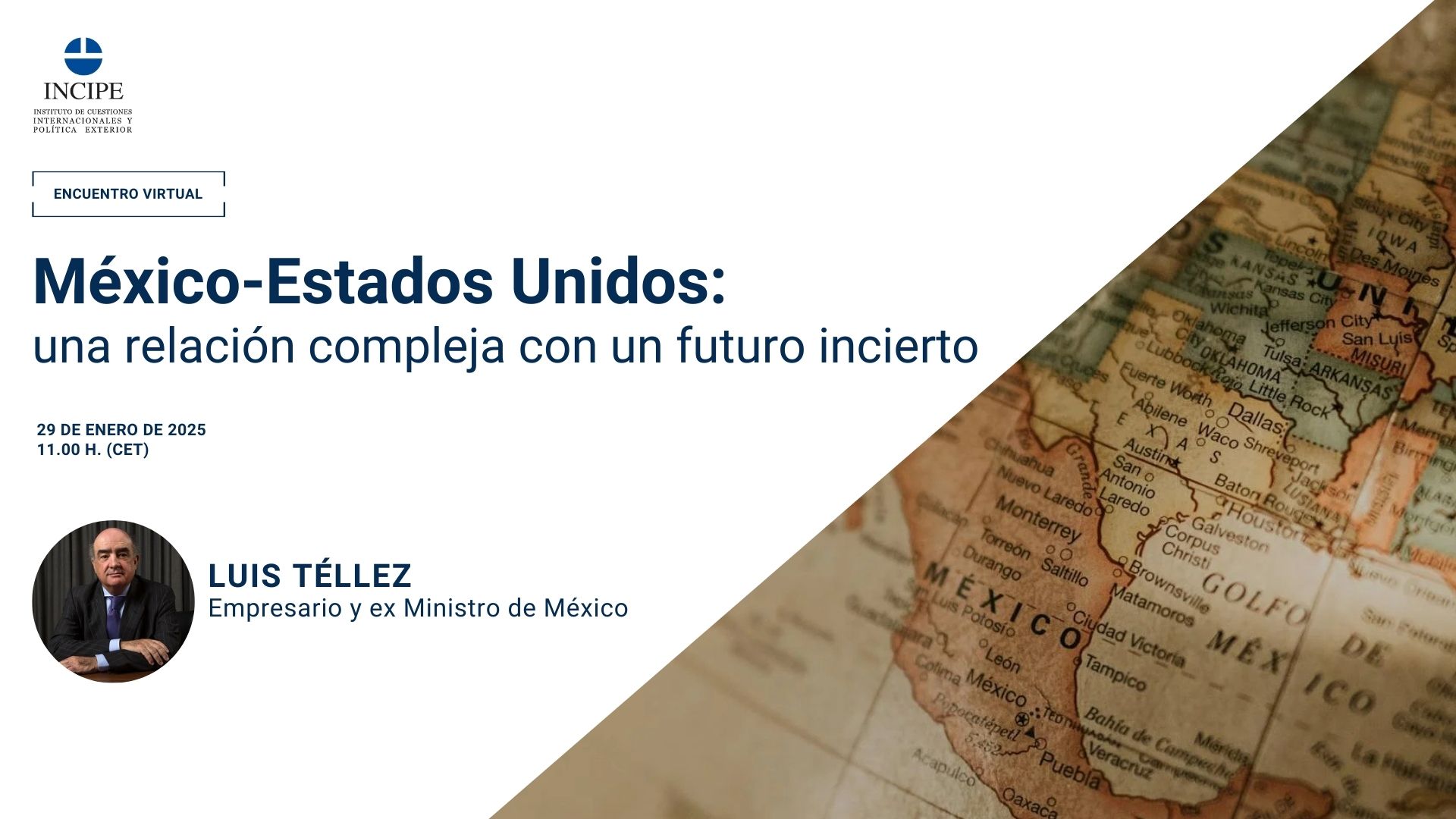The virtual session, conducted in Spanish, attracted an audience keen to understand the complexities of Mexico-US relations following Donald Trump’s recent victory in the US presidential elections. Luis Téllez, a Mexican businessman, economist, and politician, provided insights into the matter.
At the beginning of his speech, Luis Téllez highlighted concerns over President Trump’s initial statements, including his interest in acquiring Greenland and his comments regarding the Panama Canal, among other issues.
Regarding Mexico, its relationship with the United States is unique. The two countries share a border of over 3,000 kilometres, making it one of the most significant hubs for the exchange of people, goods, and services in the world, creating a high level of interdependence. As a result of this interconnectedness, Téllez noted that Mexican society has become increasingly multicultural, with a strong Spanish heritage but also significant elements of US culture.
Throughout history, Mexico-US relations have experienced ups and downs. In the 1920s, the United States considered military action against Mexico in response to the expropriation of oil. During the Great Depression, migration issues arose as many Mexicans residing in the US were deported, causing significant challenges in their reintegration. However, in the early 1990s, the relationship improved with the negotiation of Brady bonds and the signing of the North American Free Trade Agreement (NAFTA), marking a new era of cooperation. Despite this, the 1994-1995 financial crisis in Mexico strained relations. The country quickly recovered thanks to a financial aid package from the US. These fluctuations illustrate a long-standing pattern of challenges and cooperation.
Regarding Trump’s second term, Téllez emphasised three critical topics in the Mexico-US relationship: trade agreements, immigration, and drug trafficking, particularly fentanyl. Trump has ramped up pressure to curb both immigration and fentanyl trafficking, warning that if Mexico does not comply, high tariffs will be imposed.
To understand the significance of trade agreements, one must first define their purpose. The original NAFTA, signed by Canada, the US, and Mexico, aimed to gradually eliminate tariffs and trade restrictions on goods and services over a 20-year period. It also included investment guarantees, allowing companies operating in any of the three member countries to appeal to a dispute resolution panel if commitments were not met. As a result, trade between Mexico and the US flourished, boosting exports, industrial development, high-productivity agriculture, and manufacturing (especially in the automotive sector).
Despite these benefits, upon taking office in 2017, Trump expressed dissatisfaction with NAFTA, leading to renegotiations and the signing of a new agreement: the United States-Mexico-Canada Agreement (USMCA). This new treaty, signed on 30 November 2018 by Donald Trump, Mexico’s then-president Enrique Peña Nieto, and Canada’s Prime Minister Justin Trudeau, introduced more restrictive provisions, often favouring the US. The agreement has an initial 16-year term, with reviews every six years to assess its continuity. The first review was scheduled for 2026, but recent developments have placed the agreement in a critical position, as trade tensions could jeopardise its future.
Today, Mexico is the US’s largest trading partner, followed by Canada and China. Traditionally, trade, migration, organised crime, and drug trafficking were managed separately. However, Trump’s recent statements have intertwined these issues, influencing the continuity of trade relations under the USMCA.
Mexico has experienced multiple migration waves to the US, as well as two periods of mass repatriations—during the Great Depression and following President Eisenhower’s infrastructure programmes. Currently, around ten million Mexicans live in the US, with approximately 3.5 million being undocumented. In the past, crossing the border for work was not considered a crime, but today it is for those without proper documentation.
When Trump refers to the deportation of criminals, he primarily alludes to Mexicans who arrived under previous immigration reforms. Estimates suggest that the US could deport between 350,000 and 500,000 Mexicans during Trump’s first year in office, posing a significant challenge for Mexico. Mexican President Claudia Sheinbaum is preparing the country to handle this situation, which could escalate into a humanitarian crisis due to a lack of proper facilities to accommodate deported citizens.
If Mexico refuses to comply with Trump’s immigration policies, it risks facing a 25% tariff on exports to the US. This would likely trigger a severe economic crisis, increase unemployment, and lead to the relocation of major industrial plants to US territory.
Security is another key issue in bilateral relations. While the US managed to curb drug trafficking from the Caribbean and Colombia, the problem has intensified through Mexico. Cooperation between the two nations in combating drug trafficking has traditionally been close, but the surge in fentanyl-related deaths in the US has exacerbated concerns. As a result, Trump has classified Mexican criminal organisations as terrorist groups, potentially subjecting them to US anti-terrorism legislation.
In closing, Luis Téllez stressed that Mexico is facing a grave and complex situation. The potential imposition of tariffs threatens Mexico’s economy, which relies heavily on exports to the US, particularly in manufacturing. The new White House press secretary recently announced that if no progress is made by Saturday, 1 February, Trump will approve the imposition of tariffs under an economic emergency decree.
The virtual session concluded with a discussion where participants raised questions about the topics covered. During this exchange, concerns were expressed about Mexico’s excessive economic and social dependence on the US, the potential for increased trade relations between Mexico and China, and the possibility of seasonal or circular migration initiatives to mitigate the impact of mass deportations.
Sofía Gómez
Communication Assistant, INCIPE

